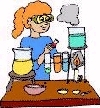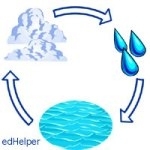
Worksheets and No Prep Teaching Resources
Reading Comprehension Worksheets
Matter
Photosynthesis

Matter
 Worksheets and No Prep Teaching Resources Reading Comprehension Worksheets Matter Photosynthesis |
 Matter |
| edHelper's suggested reading level: | grades 5 to 8 | |
| Flesch-Kincaid grade level: | 7.03 |
| Print Changes: Physical or Chemical? (font options, pick words for additional puzzles, and more) |
| Quickly print reading comprehension |
| Print a proofreading activity |
|
Changes: Physical or Chemical?
By Cindy Grigg |

|
 1 If you have studied atoms, you know that atoms are the building blocks of matter. Atoms are so small they cannot be seen with an ordinary microscope. Yet atoms make up everything in the universe. Atoms can combine with different atoms and make new substances. Substances can also break apart into separate atoms. These changes are called chemical changes or reactions. Chemical reactions happen when atoms gain, lose, or share electrons. What about when water freezes into ice? Do you think that's a chemical change?
1 If you have studied atoms, you know that atoms are the building blocks of matter. Atoms are so small they cannot be seen with an ordinary microscope. Yet atoms make up everything in the universe. Atoms can combine with different atoms and make new substances. Substances can also break apart into separate atoms. These changes are called chemical changes or reactions. Chemical reactions happen when atoms gain, lose, or share electrons. What about when water freezes into ice? Do you think that's a chemical change? Celsius). However, no chemical change has occurred. The atoms have not combined or broken apart to make a different substance; it is still water or H2O. When we heat water to a temperature of 212
Celsius). However, no chemical change has occurred. The atoms have not combined or broken apart to make a different substance; it is still water or H2O. When we heat water to a temperature of 212 F. or 100
F. or 100 Celsius, it will change into a gas called water vapor. Changes in states of matter are just physical changes.
Celsius, it will change into a gas called water vapor. Changes in states of matter are just physical changes. |
Create Weekly Reading Books
Prepare for an entire week at once! |
| Leave your feedback on Changes: Physical or Chemical? (use this link if you found an error in the story) |
 |
Matter
|
 |
Photosynthesis
|
 |
Water Cycle Worksheets | edHelper.com
|
 |
Science
|